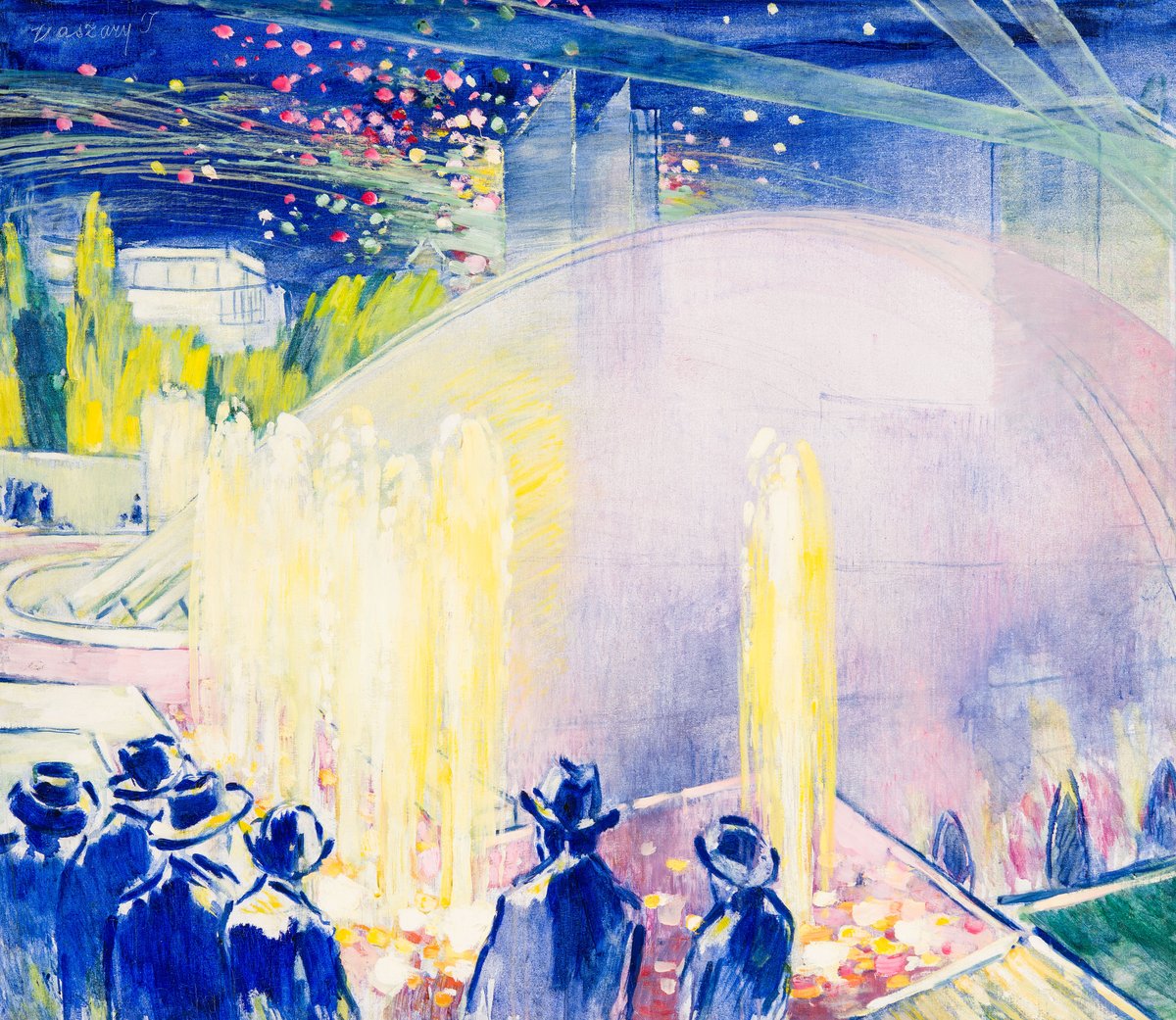
Night Lights at the Paris Exposition
Collection of Paintings
| Artist | |
|---|---|
| Date | 1892 |
| Object type | painting |
| Medium, technique | oil, canvas |
| Dimensions | image: 250 × 300 cm |
| Inventory number | 1548 |
| Collection | Collection of Paintings |
| On view | Hungarian National Gallery Building C, First Floor, Art in the 19th Century – From the Age of Reforms to the Turn of the Century, U Wing |
One of the distinctive trends in late nineteenth-century European art was genre painting that reflected sensitively on social problems and psychological issues. A number of Hungarian artists also produced a wealth of paintings that jettisoned traditional academic clichés in favour of images of contemporary life and current social phenomena. Didactic themes that held a mirror up to the morality of the modern world provided opportunities for painters to portray the spiritual and emotional aspects of people in a variety of life situations. János Thorma painted The Bereaved under the influence of fin de siècle Paris; even its central motif ― a woman in mourning dress, accompanied by her elderly husband, stooping over the healthy child of a beggarwoman ― was something he witnessed on a Parisian street. The setting of the painting, however, is the entrance to the cemetery in Nagybánya (today: Baia Mare, Romania), where a multitude of people suffering from life ― beggars and mourners ― have gathered in the autumn air. This genre scene, which magnifies an ordinary moment into monumental proportions, interprets the subject of bereavement through the emotional state of the characters in the painting. Thorma, inspired by the moralising cycle of novels by the French naturalist author Émile Zola, wanted to paint a series of socially critical pictures focusing on the vulnerability of rootless people in modern society, their moral debauchery and their destructive nihilism. However, he painted just one more scene from the planned cycle of works, entitled The Awakening, which portrays the man from The Bereaved, waking up in a stupor after a night of intemperance. The third item in his series, which never proceeded beyond sketch form, was the most ambitious in its tackling of social problems: On the Street Corner depicted a young pregnant worker, standing beneath the glow of a gas lamp, while two streetwalkers looked at her in derision. | Réka Krasznai
This record is subject to revision due to ongoing research.